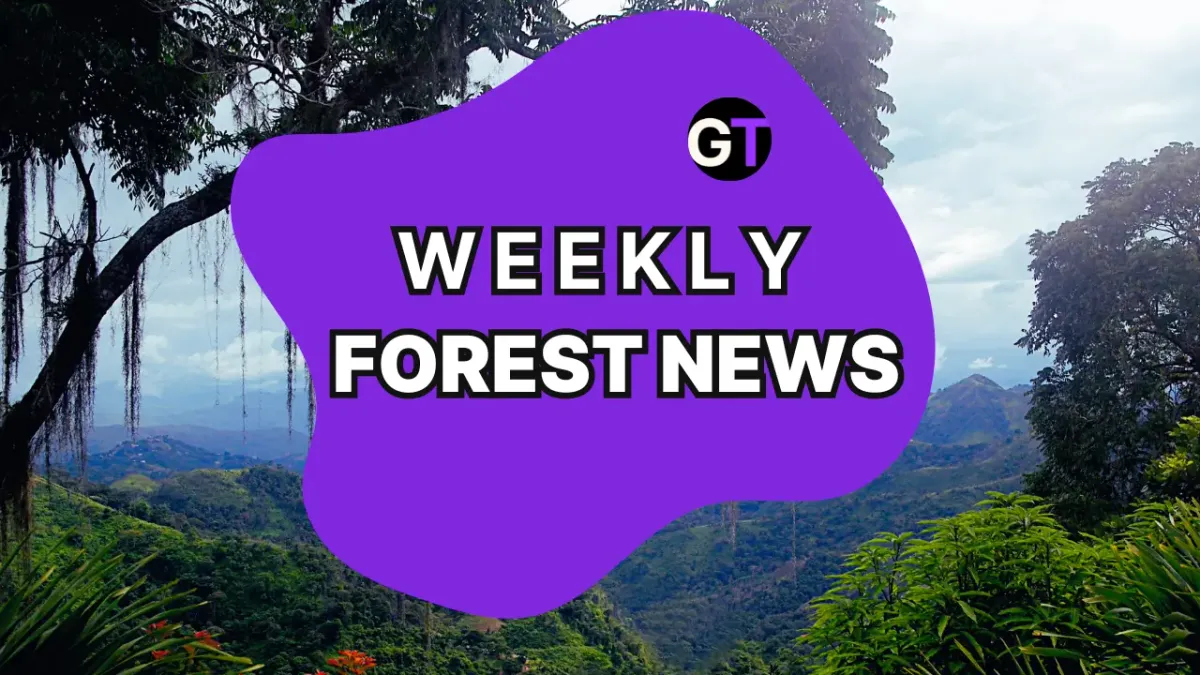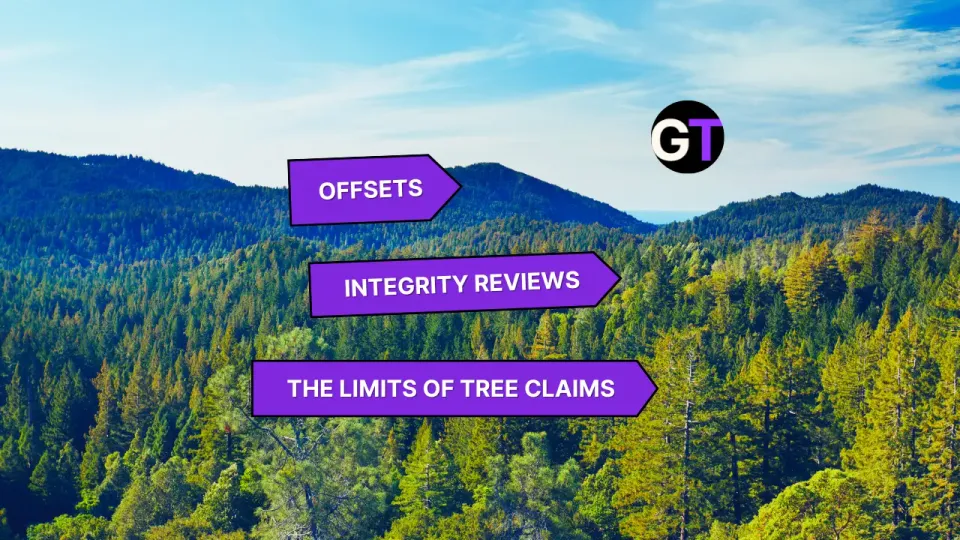Weekly Forest News, May 30
From carbon markets to wildfire recovery, this week’s dispatch tracks how money, microbes, and youth are saving trees.

Afforestation Nation: Voluntary Carbon Projects Take Root Across the U.S.
A new study digs into 46 afforestation, avoided conversion, and grassland protection projects thriving in the U.S. voluntary carbon market. Spoiler: afforestation wins the prize for most credits and co-benefits—think wildlife, water, and even weekend hikes. Owned mostly by families, NGOs, and private firms, these projects are soaking up carbon (and attention) across 13 states. But inconsistent data and transparency gaps are still muddying the market.
💬 Can the voluntary carbon market grow up without a greenhouse of regulatory clarity?
👉👉 Read more in Forests
Forests on the Brink: 6.7M Hectares Lost in 2024, GFW Data Shows
Global Forest Watch’s latest data reveals an 80% surge in tropical primary rainforest loss in 2024—totaling 6.7 million hectares, with emissions rivaling India’s fossil fuel use. Fires tied to agricultural expansion continue to drive deforestation, pushing ecosystems like the Amazon closer to ecological collapse. WWF’s Fran Price calls 2025 a make-or-break year, urging action on deforestation-free supply chains, Indigenous rights, and forest finance, ahead of COP30 in Brazil. If current trends persist, limiting warming to 1.5°C may become impossible.
💬 Will global leaders finally move from forest pledges to forest protection?
👉👉 Read more in WWF
Nador’s $4M Reforestation Push Takes Root with Water-Saving Tech
Morocco’s Nador province just dropped the sapling gauntlet with plans to reforest 7,700 hectares by 2030—part of the national “Forests of Morocco” strategy. Backed by 40M MAD, the effort includes afforestation, native species like argan and juniper, community involvement, and a debut of Waterboxx tech to keep young trees hydrated in arid zones. It’s part climate action, part local empowerment—with a side of smart irrigation.
💬 Can tech-savvy afforestation revive arid landscapes sustainably?
👉👉 Read more in HESPRESS
Teen Trio’s AI-Powered Forest Sentinel Takes on Nigeria’s Logging Crisis
Three 18-year-olds from Port Harcourt—Lesley John Jumbo, Bright Sunday, and Blessed Pepple—are flipping the script on forest protection with Reforest AI, a rugged, solar-powered sensor network that detects illegal logging through sound recognition and real-time alerts. Born out of a hackathon and fueled by a $10K grant from National Geographic’s Slingshot Challenge, their low-cost, internet-free mesh system triangulates chainsaw sounds, flashes warning lights, and beams live footage to rangers—even in remote reserves like Okomu. Built for harsh tropical conditions and trained on noisy ecosystems, Reforest AI is a DIY defense system aimed squarely at Nigeria’s forest loss epidemic.
💬 Will grassroots tech outpace red tape in the race to protect Africa’s forests?
👉👉 Read more in TechCabal
This Week in Forest Finance: From Scotland's Dry Spell to DRC’s Green Surge
From the misty hills of Scotland to the rainforests of Panama and the mines of Pennsylvania, forest finance is having a moment. This week, Scotland told landowners: replant your drought-stricken trees or pay back your grants. Meanwhile, Panama is piloting a carbon-credit program that pays Indigenous farmers to grow trees—not cut them. In the U.S., the $4.2B Bond Act is out for public comment, and the DFC dropped $3B globally—including a $500K boost to reforest the DRC. Add a $298K mine re-greening in Pennsylvania and a $10M Canadian tree fund, and you’ve got a money tree growing across borders.
💬 Can climate finance grow deeper roots with equity, tech, and accountability driving the agenda?
👉👉 Read more in Ground Truth
Ashes to Action: Canada’s Wildfire Recovery Hinges on 5.3B Seedlings
Canada’s forests are still smoldering—over 283,000 hectares have burned in 2025 alone. In response, the Canadian Tree Nursery Association is calling for a nationwide reforestation push, proposing a National Forest Restoration Task Team to plant over 5.3 billion seedlings. This ambitious recovery could boost GDP by $3.9B and create 31,000 jobs, all while tackling climate resilience and rural revitalization. The tree nursery sector stands ready. Now it’s up to federal and provincial leaders to turn ashes into action.
💬 Can Canada plant its way out of climate chaos—and grow an economy along the way?
👉👉 Read more in Wawa News
Forest Biodiversity: When Bureaucracy Meets Birdsong
In Germany’s Baden-Württemberg, forest biodiversity isn’t just about species—it’s about systems. A new study unpacks how digital tools like WNSinfo and species classification guidelines are reshaping conservation politics. Despite their tech-forward promise, tangled bureaucracy and emotional attachments to flagship species often steer the strategy. Turns out, saving forests is less about algorithms, more about alliances—and who gets to define “nature” in the first place.
💬 Can conservation balance digital precision with the messy beauty of forest life?
👉👉 Read more in Forests Monitor
Microbes, Meet Markets: Soil Carbon Credit Scheme Puts Dirt to Work
A new study in Nature Communications unveils a scalable method to quantify soil carbon, turning microbial activity into marketable climate assets. Researchers used machine learning on 1,500+ soil samples from U.S. farms to predict carbon content and stability—key ingredients for reliable carbon offsets. The tech could help standardize soil carbon credits, giving regenerative agriculture a financial backbone rooted in real-time biology, not guesswork.
💬 Could the secret to climate finance be lurking under our boots?
👉👉 Read more in Nature Communications
Silviculture 0.1.0 Sprouts R Tools for Forest Inventory Pros
Got forest data? A new R package, silviculture 0.1.0, wants to make your life easier with streamlined tools for analyzing forest inventories. Think quick basal area checks (silv_basal_area), biomass estimates via Spain’s Ruiz-Peinado models, and even LiDAR metrics like forest cover (lid_fcov) and height diversity (lid_lhdi). Volume calculation? It’s got Pressler, Huber, Smalian, and Newton functions all in one trunk. Plus, experimental features like sample size estimation and dominant height calculators.
💬 Can open-source silviculture tools make field data analysis less of a logjam?
👉👉 Read more on GitHub
Data Deep Roots: National Inventories Fuel Forest Climate Action
The FAO’s new report spotlights national forest inventories (NFIs) as unsung heroes of climate data. These on-the-ground tree counters don’t just catalog forests—they power carbon accounting, inform global climate pledges, and drive restoration finance. From Panama’s REDD+ reports to Mexico’s emission factor finesse, NFIs are turning tree measurements into international climate currency. The report also showcases FAO’s Open Foris tech, democratizing data across 25+ countries. Call it spreadsheets meets sustainability.
💬 Could better forest data be the climate world’s best kept secret weapon?
👉👉 Read the report from the FAO

Edited by Chris Harris

This work is licensed under a
Creative Commons Attribution 4.0 International License.





